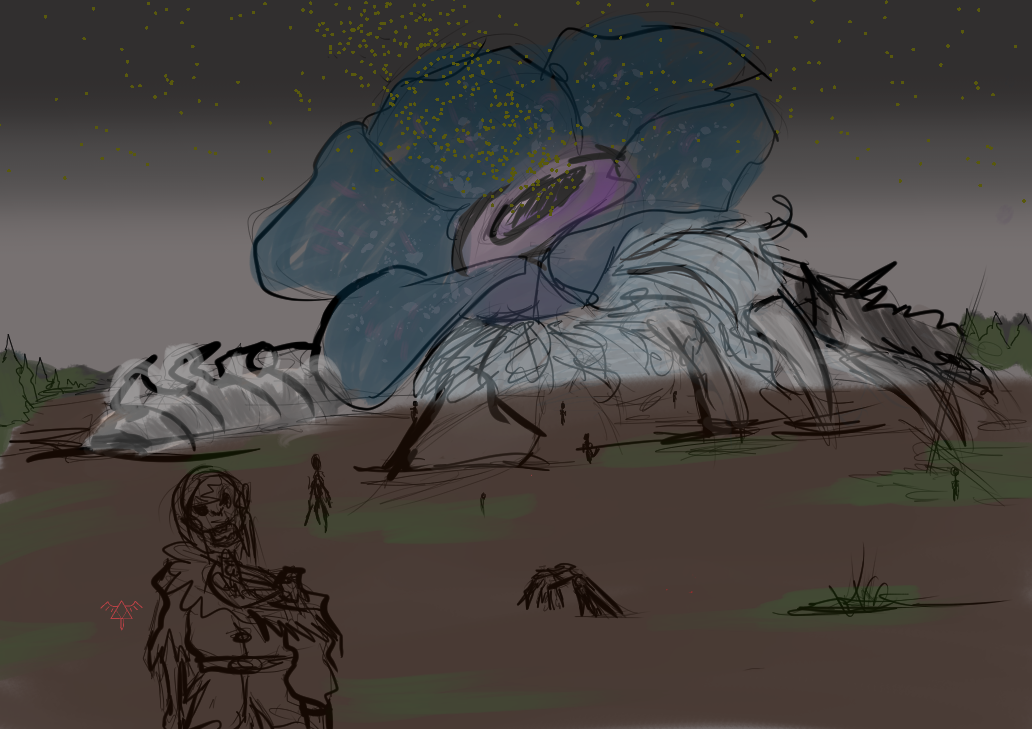Corpse Flower
TuKungajuk-Piguttuk does not hide. She is bold, inviting, and evil. When she blows her poison kisses, everyone knows to hide inside. Our tupik must me made well, kept wells, and tight from wind and curse. If you give in to her kiss, she will call you, walks you past her dead guard, and you will beg to be swallowed up. I lost my brother to her, the tribe lost many to her... I record this from my eye and spirit to you. Do not breathe in the yellow snow.Known as "TuKungajuk-Piguttuk" by the Tribes of Kinnitak-Ujagak, the corpse flower is one of the The Thirteen Almighty Primal Lords under the domain of the God Primal. It is not thought to be one of the original 13 as it appears to be growing out of a dead mega beast itself.
Basic Information
Anatomy
The Corpse Flower seems to have no stems, leaves or roots. It is a single massive flower growing out of the corps of a bird or reptile like mega beast.
Ecology and Habitats
The land around the Corpse Flower is very wet and seems to be warmer than the surrounding area. The closer one gets to the Corpse Flower, the more the air seems to grow obscure in a dense gray fog and the air takes on a sickly sweet smell. The ground is crunchy from the bones of the Corpse Flowers sentries.
Dietary Needs and Habits
The Corpse Flower appears to require protein as it's primarily known for luring animals and Homon to its cavernous core. It would seem that it erupts clouds of spores or pollen into the air for this purpose. Once inhaled the spores begin to affect the brain, making the victim lose responsiveness except to be drawn inexplicably towards the corpse flower. Some patients become "sentries" that is they will lash out and protect the area around the corpse flower as long as the body is able. The rest walk up to and climb to the center of the corpse flower and jump in to be digested.
This is called Walking Dead Sickness and is always fatal to the affected.
Conservation Status
Unique
Geographic Distribution
Related Ethnicities



